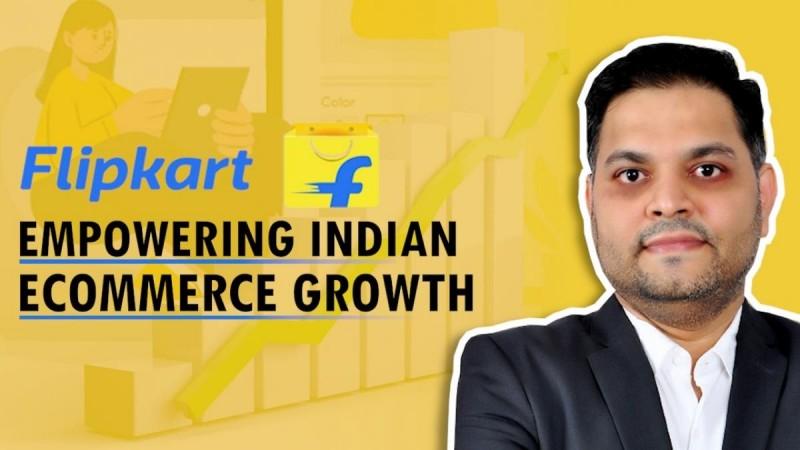
The landscape of Indian e-commerce has evolved significantly over the years, witnessing unprecedented growth and transformation. Among the key players driving this revolution is Flipkart, a pioneer in the field. What sets Flipkart apart is more than just its wide range of products, seamless user interface, or robust logistics network. The unwavering commitment to customer focus has propelled Flipkart to the forefront of Indian e-commerce, playing a pivotal role in the industry's growth.
From grocery selling to mobiles and medicines, from airline and hotel bookings to the sale of clothes and cosmetics, the Indian e-commerce sector today straddles almost every product and service that an average customer demands. The outcome of this is staggering, as revealed by a research report jointly developed by Google, Bain & Company, and Temasek. The report reveals that business-to-consumer or retail ecommerce is contributing approximately a third of the internet economy's value, with expectations that its annual GMV (the total value of goods and services sold on an ecommerce platform) will swell 6x to reach $380 billion by 2030.
Evolving with trends & demands: Flipkart's success secret
Flipkart's journey began with a vision to revolutionize how Indians shop online. From its early days, the company recognized the importance of understanding its customers' diverse needs and preferences. By staying consistently aligned with the needs of its customers, Flipkart has gained valuable insights into what Indian consumers really want, their preferred price points, when and how they want a particular item delivered, and so on. This approach has allowed the company to tailor its offerings to match the unique demands of the Indian market.
One of the standout features of Flipkart's growth strategy has been its focus on accessibility. The company realized that for e-commerce to thrive in India, it needed to cater to a broad spectrum of consumers, including those from remote areas. It went about setting up warehouses across the length and breadth of the country—from Haringhata in Bengal to Nagpur in Maharashtra and Sangareddy in Telangana—to reach the consumer quicker and keep costs down for the end-buyer. In this, it has also used its well-established relationship with kiranas and small entrepreneurs to cater to last-mile buyers.
Flipkart has taken initiatives on the demand side as well, knowing that a fast-developing economy that is also more integrated with the rest of the world and exposed to more cultures and developments, will have aspirational citizens. Concepts like Flipkart's Open Box Delivery, where the customer gets to see the product at the location before taking its delivery, have also boosted the trust factor while reducing returns and containing the costs of those returns.

Today customers don't want to be held back by any money crunch or lack of payment options. Appreciating this, Flipkart has evolved a bouquet of payment constructs to offer to customers. Consider for example, Flipkart's co-branded card with Axis Bank. It offers customers attractive cashback on purchases made not just on the platform but also those made on others, thus expanding customer choice and simplifying daily lives. Additionally, Flipkart's loyalty programs like VIP, Flipkart Plus and Plus Premium reward customers for their loyalty, further strengthening the bond between the company and its user base.
Flipkart's schemes like buy-now-pay-later and easy EMI payment options besides UPI, internet banking and wallet are significantly expanding the customer base due to the increased affordability. This has helped customers with small incomes also hitch onto the ecommerce bandwagon and lead a more aspirational life – the Google-Bain-Temasek report points out that three in five new ecommerce consumers in 2022 hailed from T3+ towns. While all digital payment options exist now and are only getting more popular.
Similarly, the Flipkart Camera allows customers to move from 'imagining' to 'experiencing' what a product would look like in reality before making a purchase decision.
Historically, customers have preferred the 'touch and feel' of a physical store when buying items like clothes, shoes, handbags and cosmetics. But now, Live Commerce and chatbots – all features available on the Flipkart website and app - have helped to increase the comfort level of the customers with the universal policy of 'no-questions-asked and full refund' always being a key influencer in such decisions. With Live Commerce, sellers also now have an insight into shopping trends on a real-time basis. This allows them to manage their inventory better and invest in other resources and processes.
Measures like OTP and AI-backed and tech-centric solutions that enable the precise location of customer addresses for deliveries have also been much appreciated by the over 500-million strong customer base of Flipkart.
Customer-first approach
The rise of e-commerce has also boosted the demand for smartphones, better mobile connectivity and better service standards everywhere, as customers expect to work from anywhere and shop from anywhere. It has also influenced customer behaviour. Of course, the comfort of shopping on the app and the relatability of communicating in one's native language that the Flipkart app offers have also boosted their confidence and trust in being part of this journey. Today, the app is available in more than 11 languages, including Hindi, Tamil, Telugu, Kannada, Malayalam, Gujarati, Marathi, Bengali, Oriya, Assamese, and Punjabi.
The Google-Bain-Temasek report points out that digital consumers begin their search for a new product online instead of visiting a physical store or seeking offline recommendations. It says digital services are fast becoming integral to India's more than 700 million internet user base, which includes 350 million digital payment users and 220 million online shoppers. The Indian e-commerce sector has created a virtuous cycle where the various components of the ecosystem feed off each other.
The story of Flipkart's rise to prominence in the Indian e-commerce landscape is a testament to the power of customer focus. By prioritizing understanding, accessibility, innovation, and personalization, Flipkart has been able to tap into the vast potential of the Indian market. Its customer-centric approach not only fueled its growth but also played a pivotal role in shaping the trajectory of the entire Indian e-commerce industry. As other players in the field take notes, it's clear that putting the customer at the heart of the business is a recipe for success in the dynamic world of e-commerce.
Disclaimer: This is a guest post by Hemant Badri, Senior Vice-President and Head of Supply Chain at Flipkart. Previously, he was the Vice President of Worldwide Planning, Analytics, Customer Experience and Europe Operational Planning at Unilever.










